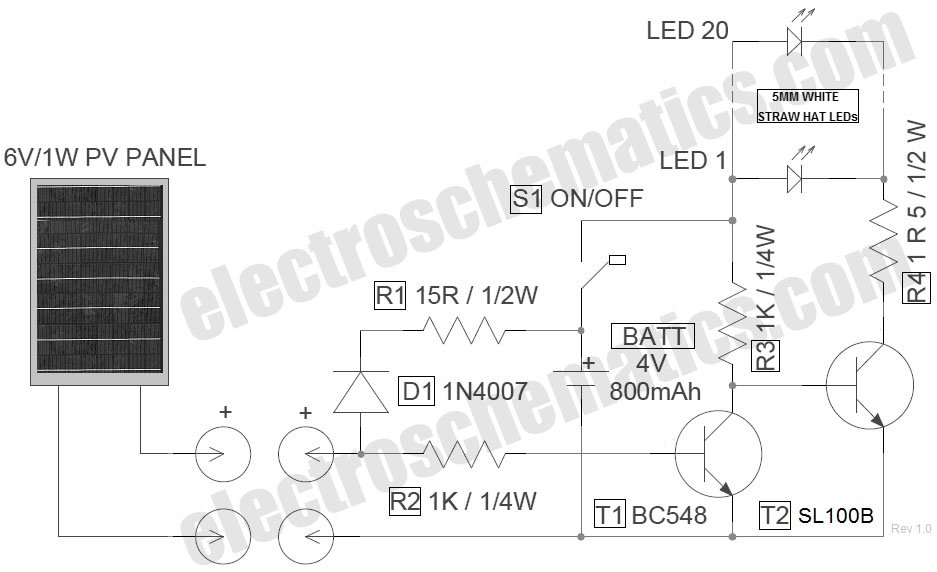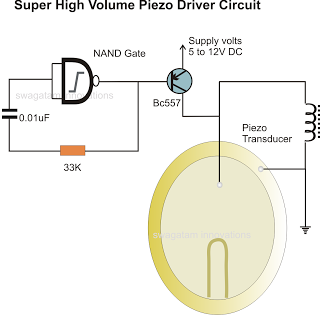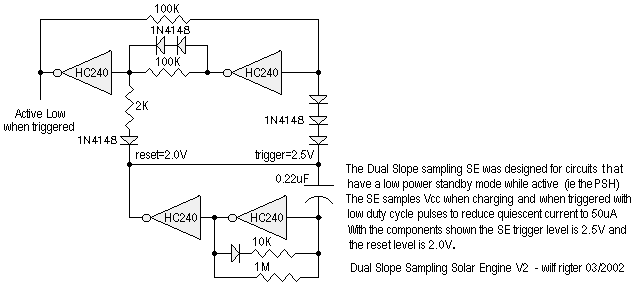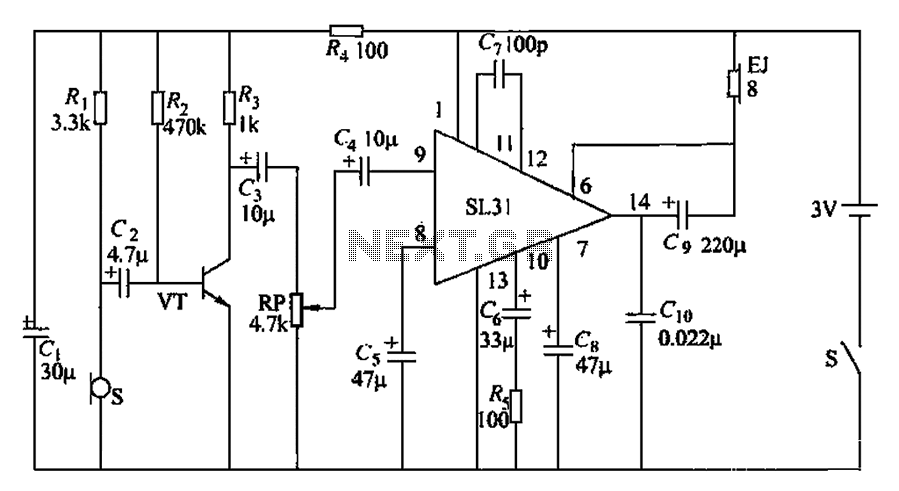
Dual edge triggered circuit diagram
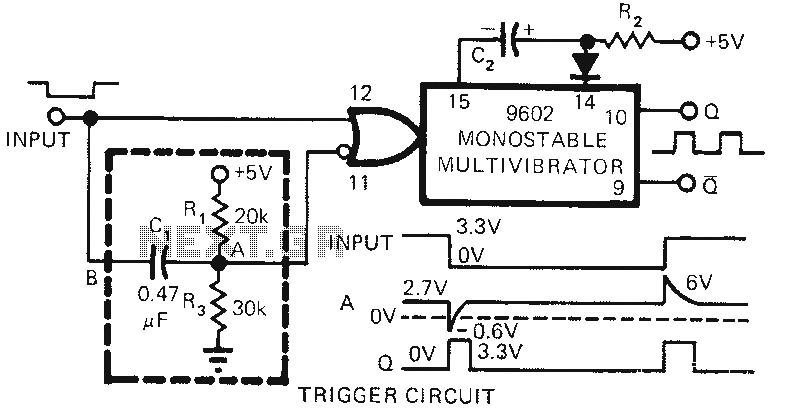
The 9602 multivibrator circuit can trigger either the rising edge or the falling edge of a square wave, but not both simultaneously. To enable double-edge triggering, two additional resistors and a capacitor can be employed. When the input signal decreases, capacitor C1 generates a negative pulse that triggers the 9602, resulting in an output pulse.
The 9602 multivibrator is a versatile component commonly used in timing applications and signal generation. It is capable of functioning as a monostable or astable multivibrator, depending on the configuration of external components. In a typical setup, the circuit can be designed to respond to changes in the input signal, specifically the rising and falling edges of a square wave.
To achieve double-edge triggering, the circuit requires the addition of two resistors (R1 and R2) and a capacitor (C1). The configuration allows the multivibrator to respond to both edges of the input signal. When the input signal transitions from low to high (rising edge), the circuit produces a corresponding output pulse. Conversely, when the input signal transitions from high to low (falling edge), the capacitor C1 discharges, creating a negative pulse that triggers the 9602, resulting in another output pulse.
The values of the resistors and capacitor must be selected carefully to ensure the desired timing characteristics and pulse width of the output signal. The timing period can be calculated using the formula: T = 0.7 * (R1 + R2) * C1, where T is the output pulse width. This flexibility allows the 9602 multivibrator to be integrated into various applications, such as waveform shaping, frequency division, and pulse generation in digital circuits.
In conclusion, the 9602 multivibrator circuit is a robust solution for generating precise timing signals and can be adapted for double-edge triggering through the addition of external components. Proper component selection and configuration are essential for achieving the desired functionality in electronic designs.Typically, 9602 multivibrator circuit can trigger the rising edge or falling edge of the square wave, but not both at the same time can trigger the use of two additional resistor and a capacitor can trigger a double edge. When the input decreases, C1 through negative pulse trigger to 9602, to produce the output pulse.
The 9602 multivibrator is a versatile component commonly used in timing applications and signal generation. It is capable of functioning as a monostable or astable multivibrator, depending on the configuration of external components. In a typical setup, the circuit can be designed to respond to changes in the input signal, specifically the rising and falling edges of a square wave.
To achieve double-edge triggering, the circuit requires the addition of two resistors (R1 and R2) and a capacitor (C1). The configuration allows the multivibrator to respond to both edges of the input signal. When the input signal transitions from low to high (rising edge), the circuit produces a corresponding output pulse. Conversely, when the input signal transitions from high to low (falling edge), the capacitor C1 discharges, creating a negative pulse that triggers the 9602, resulting in another output pulse.
The values of the resistors and capacitor must be selected carefully to ensure the desired timing characteristics and pulse width of the output signal. The timing period can be calculated using the formula: T = 0.7 * (R1 + R2) * C1, where T is the output pulse width. This flexibility allows the 9602 multivibrator to be integrated into various applications, such as waveform shaping, frequency division, and pulse generation in digital circuits.
In conclusion, the 9602 multivibrator circuit is a robust solution for generating precise timing signals and can be adapted for double-edge triggering through the addition of external components. Proper component selection and configuration are essential for achieving the desired functionality in electronic designs.Typically, 9602 multivibrator circuit can trigger the rising edge or falling edge of the square wave, but not both at the same time can trigger the use of two additional resistor and a capacitor can trigger a double edge. When the input decreases, C1 through negative pulse trigger to 9602, to produce the output pulse.
